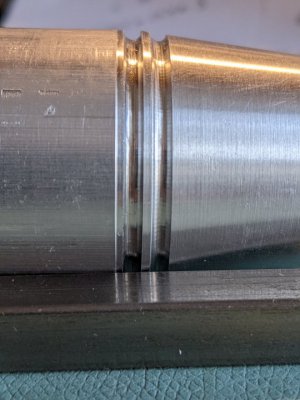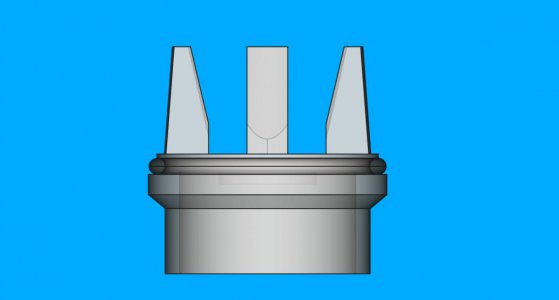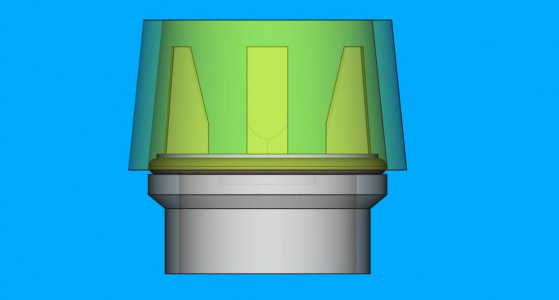- Joined
- Dec 18, 2019
- Messages
- 6,464
I didn't like the piece that was machined, it didn't fit well in the mating assembly. Decided to measure things again and found an error. Too much taper length and not quite the correct angles. I thought this would be a learning experience, and so far it is. Modified the drawings to reflect the new measurements. Cut a new piece of aluminum and started again. This time I bought the float piston and the bonnet down to the shop. This is what I have so far. To get the critical outer angle, I put the float piston in the chuck and set the compound angle with a DTI running along the ears. It was very close to what I had calculated. The taper fit correctly in the bonnet part of the valve. Much better than the first attempt.
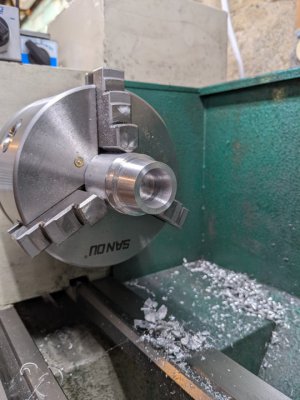
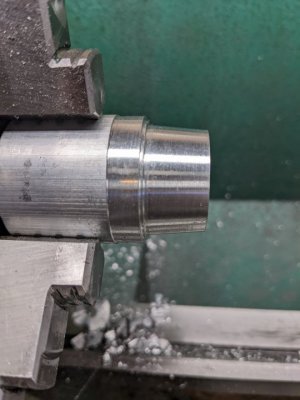
Used the bushing I made yesterday to hold the boring bar.
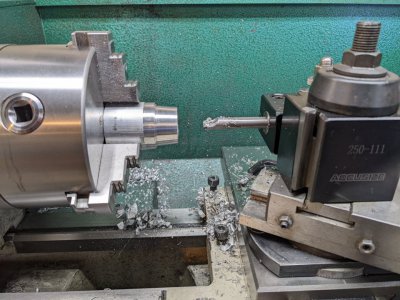
I am at the point where I need to make an o-ring groove tool. Found a piece of HSS and wanted to cut it off. Of course the 4-1/2" grinder had a grinding disk rather than a cut-off wheel. This lead to going into the garage to find the pin spanner tool to pull the special nut. Got that done and noticed that I needed a large thick flat washer to get the cut-off disk away from the guard. Don't even remember seeing a washer like that. Well I can make one! Found a piece of 1.5" 12L14 and cut off a chunk. Did the work in the mini-lathe, as I didn't want to disturb the piston. Long story short, didn't make the washer thick enough. Eventually made another one, and finally cut off a piece of the HSS. Made a mess on both lathes and the mill today. Too tired to deal with it tonight.
Cleanup will be the first order of business tomorrow. Then will grind a radiused o-ring tool.


Used the bushing I made yesterday to hold the boring bar.

I am at the point where I need to make an o-ring groove tool. Found a piece of HSS and wanted to cut it off. Of course the 4-1/2" grinder had a grinding disk rather than a cut-off wheel. This lead to going into the garage to find the pin spanner tool to pull the special nut. Got that done and noticed that I needed a large thick flat washer to get the cut-off disk away from the guard. Don't even remember seeing a washer like that. Well I can make one! Found a piece of 1.5" 12L14 and cut off a chunk. Did the work in the mini-lathe, as I didn't want to disturb the piston. Long story short, didn't make the washer thick enough. Eventually made another one, and finally cut off a piece of the HSS. Made a mess on both lathes and the mill today. Too tired to deal with it tonight.
Cleanup will be the first order of business tomorrow. Then will grind a radiused o-ring tool.


